|
More than a year ago, I
had the opportunity to test some watches during a trip
through the Algerian Sahara. The watches were given to us
for that purpose by the manufacturers, and represented a
wide spectre from multifunctional quartz (Tissot T-Touch,
Casio GPS) to more or less classic mechanical timepieces
(Sinn, Limes, Omega). I was very astonished, when Omega sent
me a brand new AquaTerra to participate in this test.

This watch seemd to be fully out of place, since it was so
thin, appeared very elegant, and had these fine, polished
markers and hands. I replaced the steel braclet with a
simple black leather strap from Glycine, since it was a
condition that the strap could be adapted to different
persons without tools.
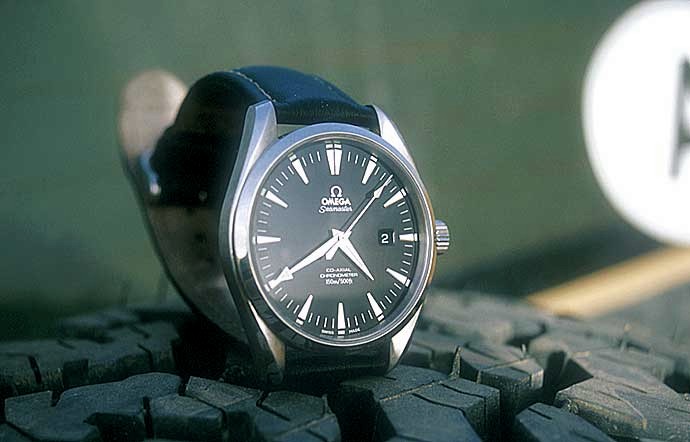
Somehow, I expected the Omega to fail, confronted with heat,
dust, sand and massive vibrations. Additionally, I did not
think it would be legible enough at night or in adverse
lighting conditions.

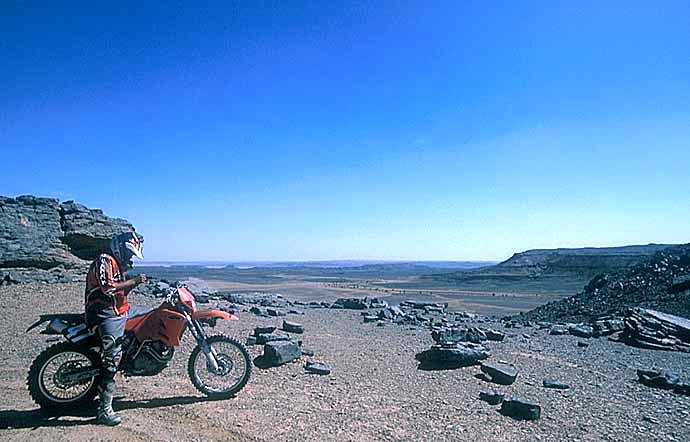

Strangely, I was to be proved the contrary. Part of the test
was that every watch should spend at least one day on the
wrist of our motorbikers. These two crazy men  dashed over stones and sand, mostly standing on the
footrests, in order to reduce the strain on their backsides.
You can imagine that 12 hours rattling and vibrating on
their wrists is not a nice treatment for mechanical watches.
What astonished me, was the result: While all mechanical
watches lost their normal accuracy after such a day, to
regain their normal rate only after two or three days, the
Omega behaved as if never anything had happened: It had just
the same +2 seconds rate, as it had all the other days.
dashed over stones and sand, mostly standing on the
footrests, in order to reduce the strain on their backsides.
You can imagine that 12 hours rattling and vibrating on
their wrists is not a nice treatment for mechanical watches.
What astonished me, was the result: While all mechanical
watches lost their normal accuracy after such a day, to
regain their normal rate only after two or three days, the
Omega behaved as if never anything had happened: It had just
the same +2 seconds rate, as it had all the other days.

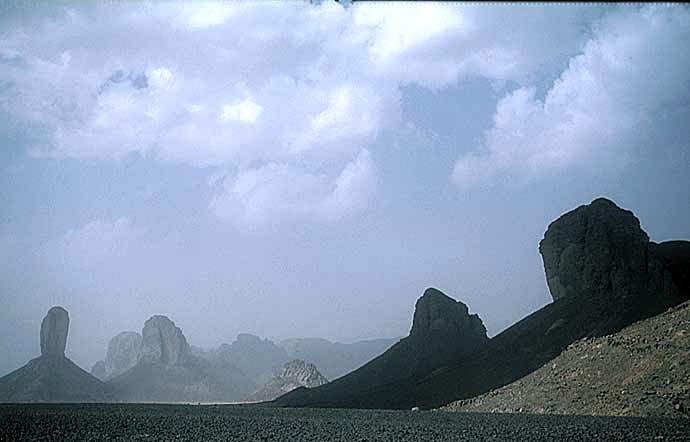
Additionally, the AquaTerra proved to be the most legible
watch of all, even compared with the new Sinn 756
chronograph. The real test was not in the night, or in
bright sunshine, but in the time between: In dawn or dusk.
You know the situation in a cineam or theatre? You want to
know the time, but somehow, the ambient light is not strong
enough to see the details on the dial, but too strong to
overshine the luminous mass on hands and markers. The same
problem was encountered at the campfire: You just could not
see any detail on that Sinn's dial; nor I could on any other
watch - except the Omega. Not becuase of its luminous parts,
which are not very large. But due to the faceted, hoghly
polished markers and hands, every faint shine light is
reflected, making hands and markers stand out clearly
against the black dial. Even bare starlight was enough to
read the time at a glimpse.

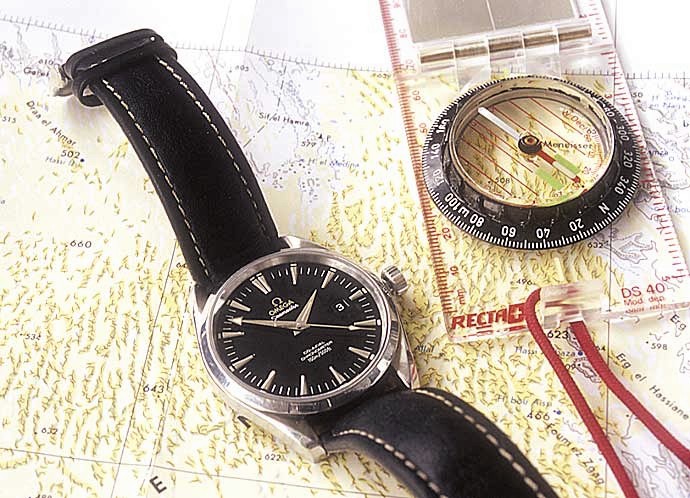
The only thing which was not undestroyable enough was the
polished case, which, of course, became massively scratched
after but three weeks of desert digging.
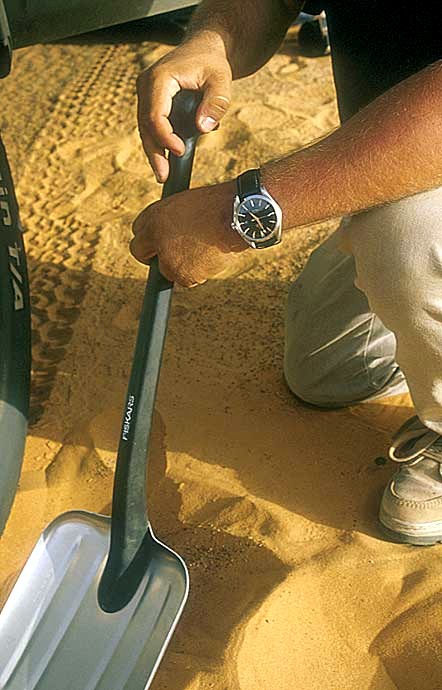
Leaving that aside, I would take this watch for an adventure
trip anytime. And additionally, it serves as an elegant
dress watch. It was really nice to see that Omega built a
fine, elegant watch, which does not have to fear rough
treatment.
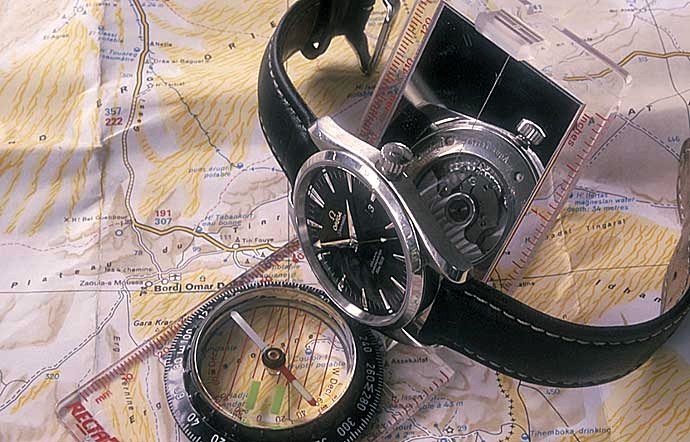
Regards,
Marcus
|





 dashed over stones and sand, mostly standing on the
footrests, in order to reduce the strain on their backsides.
You can imagine that 12 hours rattling and vibrating on
their wrists is not a nice treatment for mechanical watches.
What astonished me, was the result: While all mechanical
watches lost their normal accuracy after such a day, to
regain their normal rate only after two or three days, the
Omega behaved as if never anything had happened: It had just
the same +2 seconds rate, as it had all the other days.
dashed over stones and sand, mostly standing on the
footrests, in order to reduce the strain on their backsides.
You can imagine that 12 hours rattling and vibrating on
their wrists is not a nice treatment for mechanical watches.
What astonished me, was the result: While all mechanical
watches lost their normal accuracy after such a day, to
regain their normal rate only after two or three days, the
Omega behaved as if never anything had happened: It had just
the same +2 seconds rate, as it had all the other days.




